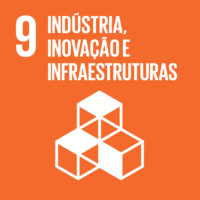Ciência_Iscte
Publicações
Descrição Detalhada da Publicação
Título Livro
Advances in Speech and Language Technologies for Iberian Languages
Ano (publicação definitiva)
2014
Língua
Inglês
País
Espanha
Mais Informação
Web of Science®
Scopus
Google Scholar
Esta publicação não está indexada no Overton
Abstract/Resumo
The most promising approaches for surface Electromyography (EMG) based speech interfaces commonly focus on the tongue muscles. Despite the interesting results in small vocabularies tasks, it is yet unclear which articulation gestures these sensors are actually detecting. To address these complex aspects, in this study we propose a novel method, based on synchronous acquisition of surface EMG and Ultrasound Imaging (US) of the tongue, to assess the applicability of EMG to tongue gesture detection. In this context, the US image sequences allow us to gather data concerning tongue movement over time, providing the grounds for the EMG analysis. Using this multimodal setup, we have recorded a corpus that covers several tongue transitions (e.g. back to front) in different contexts. Considering the annotated tongue movement data, the results from the EMG analysis show that tongue transitions can be detected using the EMG sensors, with some variability in terms of sensor positioning, across speakers, and the possibility of high false-positive rates.
Agradecimentos/Acknowledgements
--
Palavras-chave
Surface electromyography; Synchronization; Tongue gestures; Gesture detection; Ultrasound imaging; Computational linguistics; Electromyography; Synchronization; Ultrasonic imaging;
Classificação Fields of Science and Technology
- Ciências da Computação e da Informação - Ciências Naturais
- Engenharia Eletrotécnica, Eletrónica e Informática - Engenharia e Tecnologia
Contribuições para os Objetivos do Desenvolvimento Sustentável das Nações Unidas
Com o objetivo de aumentar a investigação direcionada para o cumprimento dos Objetivos do Desenvolvimento Sustentável para 2030 das Nações Unidas, é disponibilizada no Ciência_Iscte a possibilidade de associação, quando aplicável, dos artigos científicos aos Objetivos do Desenvolvimento Sustentável. Estes são os Objetivos do Desenvolvimento Sustentável identificados pelo(s) autor(es) para esta publicação. Para uma informação detalhada dos Objetivos do Desenvolvimento Sustentável, clique aqui.

 English
English


